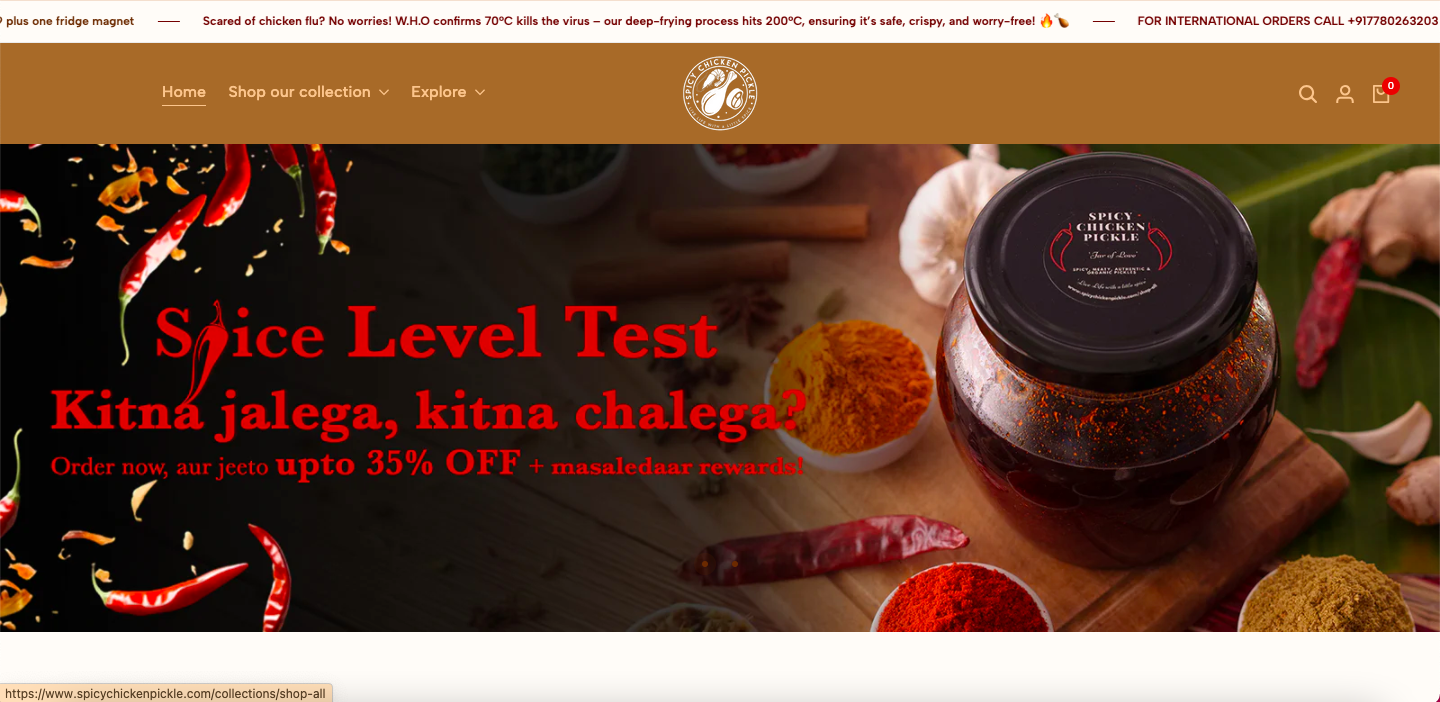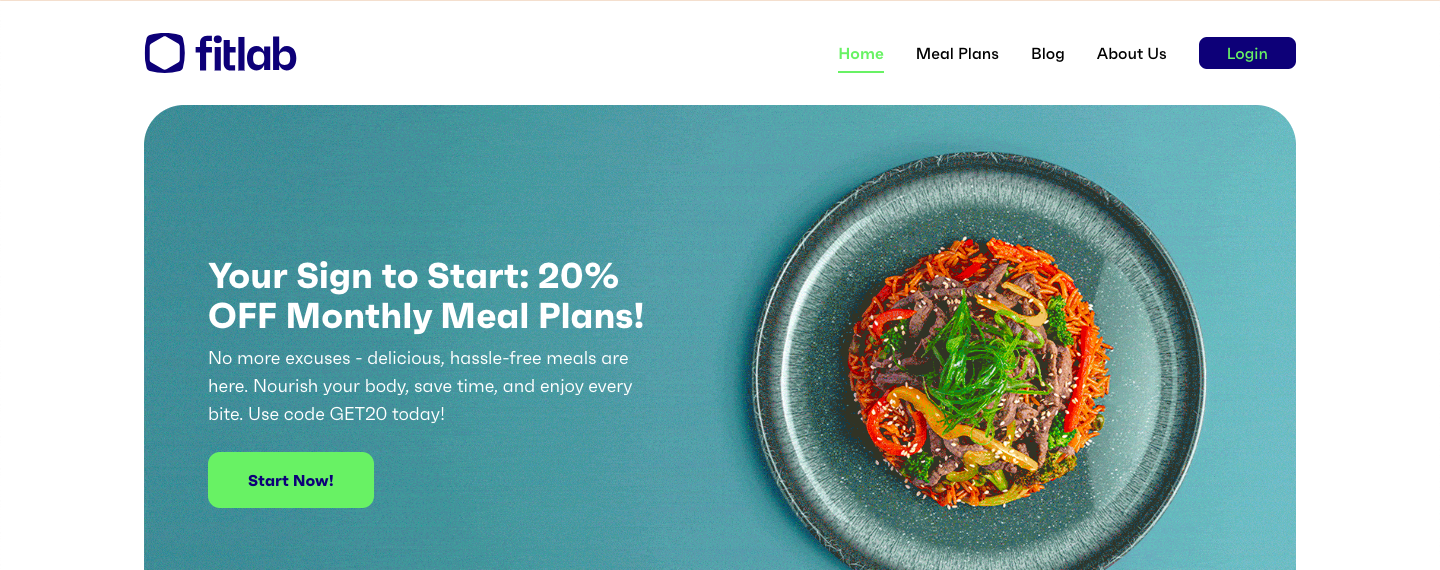
From Zero to ₹37 Million: The Spicy Chicken Pickle Growth Playbook
Project Breakdown
From Zero to Millions: The Spicy Chicken Pickle Growth Story (2023-2025)
Introduction
In the competitive world of food e-commerce, building a brand from scratch and scaling it to multi-million revenue within 18 months is no small feat. Yet, Spicy Chicken Pickle (https://www.spicychickenpickle.com/) has accomplished exactly that through strategic marketing, data-driven decision making, and a systematic approach to scaling.
This case study explores how Spicy Chicken Pickle grew from launch in December 2023 to generating over ₹37 million in sales by May 2025. We'll break down the step-by-step growth journey, analyze the marketing strategies that drove this remarkable expansion, and extract key lessons that can be applied to other e-commerce ventures.
The Launch Phase: Building a Foundation (Dec 2023 - Feb 2024)
Starting From Zero
When Spicy Chicken Pickle launched in December 2023, the brand faced the classic challenges of any new e-commerce business: no customer base, no brand recognition, and no historical data to guide marketing decisions. The initial focus was necessarily on establishing market presence and collecting foundational data.
The brand began with a series of experimental campaigns in late 2023, labeled sequentially as C1, C2, C3, and C4. These initial campaigns, launched in October 2023 (prior to the official store launch), were designed to test different messaging, audiences, and creative approaches.
Early Campaign Strategy
The early campaign structure reveals a methodical approach to market entry:
- C1 Campaign: The first campaign focused on basic brand introduction, generating 16 purchases at a cost per purchase of ₹214.16.
- C2 Retargeting: An early retargeting effort to capture interested users, achieving 61 purchases with a healthy ROAS of 2.12.
- C3 Campaign: A refinement of initial targeting, resulting in 28 purchases at a cost per purchase of ₹169.14.
- C4 Look a Like Campaign: An expansion using lookalike audiences based on early converters, driving 116 purchases with a strong ROAS of 1.90.
This sequential approach allowed the brand to quickly iterate and learn from each campaign, applying insights to subsequent efforts. By February 2024, just three months after launch, monthly revenue had already climbed to approximately ₹2 million, establishing a strong foundation for future growth.
The Scaling Phase: Accelerating Growth (Mar 2024 - Jun 2024)
Diversifying Campaign Structure
With initial validation and data in hand, Spicy Chicken Pickle entered a rapid scaling phase from March to June 2024. During this period, the brand implemented a more sophisticated, funnel-based campaign structure:
Awareness Campaigns: The "Awareness_Traffic_Boost" campaign was launched to expand reach, focusing on top-of-funnel metrics rather than immediate ROAS.
Consideration Campaigns: Generic search campaigns on Google Ads and shopping ads were implemented to capture users actively searching for related products.
Conversion Campaigns: Specialized campaigns like CBO_ATC (Campaign Budget Optimization focused on Add-to-Cart events) were deployed to drive purchase actions.
Retention Campaigns: A dedicated "Remarketing Campaign" was established to re-engage previous site visitors and customers.
Awareness Campaigns: The "Awareness_Traffic_Boost" campaign was launched to expand reach, focusing on top-of-funnel metrics rather than immediate ROAS.
Consideration Campaigns: Generic search campaigns on Google Ads and shopping ads were implemented to capture users actively searching for related products.
Conversion Campaigns: Specialized campaigns like CBO_ATC (Campaign Budget Optimization focused on Add-to-Cart events) were deployed to drive purchase actions.
Retention Campaigns: A dedicated "Remarketing Campaign" was established to re-engage previous site visitors and customers.
Platform Diversification
During this phase, the brand also established a strategic balance between advertising platforms:
Meta (Facebook & Instagram): Served as the primary scale driver with ₹14.9 million in ad spend, focusing on visual storytelling and broad audience reach.
Google Ads: Utilized for capturing high-intent traffic with ₹362,260 in spend, focusing on search and shopping campaigns.
Meta (Facebook & Instagram): Served as the primary scale driver with ₹14.9 million in ad spend, focusing on visual storytelling and broad audience reach.
Google Ads: Utilized for capturing high-intent traffic with ₹362,260 in spend, focusing on search and shopping campaigns.
This platform diversification created a complementary approach that covered different aspects of the customer journey while spreading risk across multiple channels.
Results of the Scaling Phase
The scaling strategy proved highly effective, with monthly revenue reaching a peak of approximately ₹3 million by June 2024. Key performance indicators during this phase included:
- Rapid revenue growth (0 to ₹3M monthly in 6 months)
- Increasing average order value, trending toward the eventual ₹716.35 average
- Establishment of initial returning customer base
- Positive ROAS maintained despite aggressive scaling
The Optimization Phase: Efficiency and Refinement (Jul 2024 - Oct 2024)
Shifting Focus to Efficiency
After the initial scaling phase, Spicy Chicken Pickle experienced a temporary revenue decline as the brand shifted focus from pure growth to efficiency and profitability. This strategic pivot involved:
Campaign Consolidation: Focusing budget on the highest-performing campaigns and audiences.
Advanced Campaign Structures: Implementation of sophisticated campaign types like Performance Max on Google Ads and the scaled AASC Campaign on Meta.
ROAS Optimization: Setting target ROAS goals for campaigns to ensure profitability while maintaining scale.
Campaign Consolidation: Focusing budget on the highest-performing campaigns and audiences.
Advanced Campaign Structures: Implementation of sophisticated campaign types like Performance Max on Google Ads and the scaled AASC Campaign on Meta.
ROAS Optimization: Setting target ROAS goals for campaigns to ensure profitability while maintaining scale.
Performance Marketing Evolution
The brand's performance marketing approach evolved significantly during this phase:
PMAX Implementation: The Performance Max campaign on Google Ads drove 963,120 conversions with a cost per conversion of ₹392.95, leveraging Google's machine learning capabilities.
AASC Campaign Scaling: The AASC Campaign became the primary revenue driver on Meta, generating 42,987 purchases with a cost per purchase of ₹329.64 and a positive ROAS of 2.13.
Remarketing Excellence: The Remarketing Campaign achieved the highest ROAS of 3.00, demonstrating the value of re-engaging interested customers.
PMAX Implementation: The Performance Max campaign on Google Ads drove 963,120 conversions with a cost per conversion of ₹392.95, leveraging Google's machine learning capabilities.
AASC Campaign Scaling: The AASC Campaign became the primary revenue driver on Meta, generating 42,987 purchases with a cost per purchase of ₹329.64 and a positive ROAS of 2.13.
Remarketing Excellence: The Remarketing Campaign achieved the highest ROAS of 3.00, demonstrating the value of re-engaging interested customers.
Results of the Optimization Phase
By October 2024, the brand had achieved a second revenue peak, with improved efficiency metrics across all platforms:
- Google Ads achieving an overall ROAS of 2.82
- Meta campaigns maintaining a platform ROAS of 2.06
- Improved conversion rates across all campaigns
- Enhanced customer targeting precision
The Stabilization Phase: Sustainable Growth (Nov 2024 - May 2025)
Balancing Acquisition and Retention
In the final phase of our analysis period, Spicy Chicken Pickle focused on establishing a sustainable growth model that balanced new customer acquisition with retention of existing customers. Key strategies included:
Customer Lifetime Value Focus: Shifting from pure acquisition metrics to customer value optimization.
Returning Customer Cultivation: Building on the 7.61% returning customer rate to increase repeat purchases.
Balanced Marketing Mix: Maintaining a strategic balance between platforms and campaign types to ensure consistent performance.
Customer Lifetime Value Focus: Shifting from pure acquisition metrics to customer value optimization.
Returning Customer Cultivation: Building on the 7.61% returning customer rate to increase repeat purchases.
Balanced Marketing Mix: Maintaining a strategic balance between platforms and campaign types to ensure consistent performance.
Long-term Performance Indicators
By May 2025, the brand had established impressive performance metrics that demonstrated the success of its scaling journey:
- Total Revenue: ₹37,254,447.69 in total sales
- Order Volume: 51,163 fulfilled orders (99.7% fulfillment rate)
- Product Success: Top product (Spicy Chicken Pickle Prince Jar) generating ₹10,599,315.81 in revenue
- Marketing Efficiency: Overall marketing ROAS of approximately 2.44
- Customer Experience: High fulfillment rate and growing returning customer percentage
Key Strategies That Drove Success
1. Phased Campaign Approach
Spicy Chicken Pickle's systematic progression from basic to advanced campaign structures allowed for controlled scaling without efficiency loss. By starting with simple campaign structures and gradually introducing specialized campaigns for different funnel stages, the brand created a foundation for sustainable long-term growth.
2. Platform Diversification with Specialized Focus
The brand leveraged each platform's strengths while maintaining cross-platform consistency:
- Meta for scale and volume (₹14.9M spend)
- Google for high-intent traffic and precision targeting (₹362K spend)
- Shopify for on-site conversion optimization
This comprehensive coverage across the customer journey, combined with platform-specific optimization, led to overall efficiency and risk diversification.
3. Funnel-Based Campaign Structure
Dedicated campaigns for each stage of the customer journey allowed for efficient budget allocation and tailored messaging:
- Awareness campaigns for brand introduction
- Consideration campaigns for product education
- Conversion campaigns for purchase facilitation
- Retention campaigns for customer loyalty
This structured approach improved overall conversion path optimization and marketing efficiency.
4. Iterative Testing and Optimization
Continuous testing, learning, and refinement cycles were evident throughout the brand's growth journey:
- Sequential campaign launches with learnings applied to subsequent campaigns
- A/B testing capabilities utilized across platforms
- Regular campaign performance monitoring and optimization
This approach led to improved ROAS over time and identification of high-performing audience segments.
5. Balanced Growth and Efficiency Focus
The brand skillfully shifted focus between growth and efficiency based on business stage:
- Initial focus on growth and customer acquisition
- Mid-stage pivot to efficiency and ROAS optimization
- Late-stage balance of acquisition and retention
This balanced approach created a sustainable growth trajectory with improved profitability over time.
Lessons for E-commerce Brands
The Spicy Chicken Pickle growth story offers valuable lessons for other e-commerce brands looking to scale:
Start with Experimentation: Begin with small, experimental campaigns to gather data before scaling.
Build a Full-Funnel Strategy: Create dedicated campaigns for each stage of the customer journey.
Diversify Platforms Strategically: Leverage different platforms for their unique strengths while maintaining a cohesive strategy.
Prioritize Data Collection Early: Early investment in data collection pays dividends in later optimization.
Balance Growth and Efficiency: Know when to focus on scale and when to prioritize profitability.
Optimize for Lifetime Value: Look beyond initial purchase metrics to customer retention and repeat purchases.
Maintain Systematic Campaign Evolution: Progress methodically from simple to sophisticated campaign structures.
Start with Experimentation: Begin with small, experimental campaigns to gather data before scaling.
Build a Full-Funnel Strategy: Create dedicated campaigns for each stage of the customer journey.
Diversify Platforms Strategically: Leverage different platforms for their unique strengths while maintaining a cohesive strategy.
Prioritize Data Collection Early: Early investment in data collection pays dividends in later optimization.
Balance Growth and Efficiency: Know when to focus on scale and when to prioritize profitability.
Optimize for Lifetime Value: Look beyond initial purchase metrics to customer retention and repeat purchases.
Maintain Systematic Campaign Evolution: Progress methodically from simple to sophisticated campaign structures.
Conclusion
Spicy Chicken Pickle's journey from launch to multi-million revenue demonstrates the power of strategic, data-driven marketing combined with systematic scaling approaches. By methodically progressing through distinct growth phases—launch, scaling, optimization, and stabilization—the brand achieved remarkable results in just 18 months.
The success factors identified in this analysis—phased campaign approach, platform diversification, funnel-based structure, iterative optimization, and balanced growth focus—provide a blueprint for e-commerce brands looking to achieve similar growth trajectories.
As Spicy Chicken Pickle continues its growth journey beyond May 2025, the foundation established during these critical first 18 months positions the brand for continued success and market expansion.


